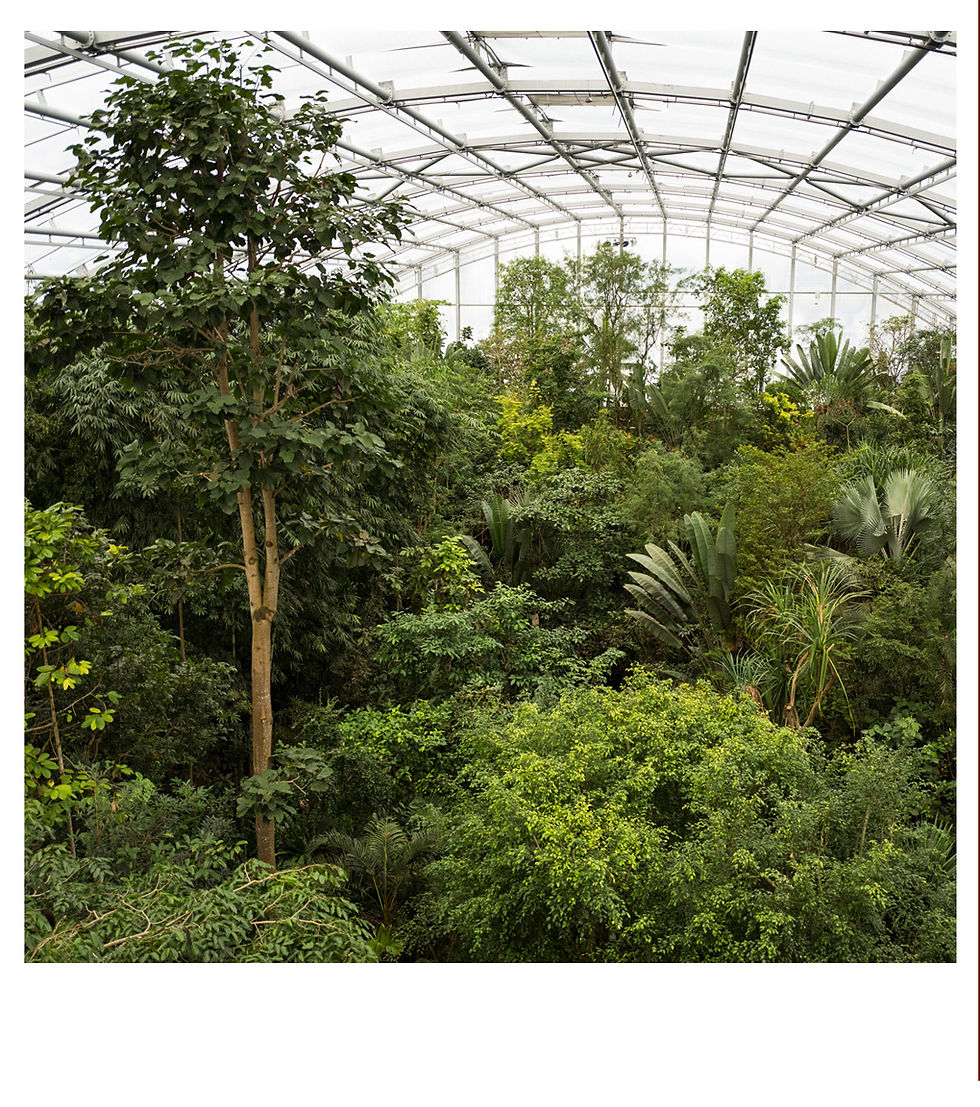FRANCE

A pond in the shade of a Cercidiphyllum from Japan
Jardin Des Plantes of nantes
A History
of Seeds and Sailors
Photographs and text
by Cristina Archinto
The history of France, it is well known, abounds with seafarers and colonies but not everyone knows that from the very beginning the attention given to botany was almost on a par with that of England. In the heart of the Loire region, in Nantes, not far from the railway station, there is a garden, or rather, to be more precise, a Jardin des Plantes, truly noteworthy, not only because it is very well maintained, even in these times of drought and decidedly high temperatures, but because its history, which has always been linked to French explorers, has brought truly remarkable botanical specimens from all over the world.

River Loira
Its history has distant roots; it was in 1688 when a group of local pharmacists decided to create, more for pleasure than anything else, a small 'apothecary's garden' (Jardin des Apothicaires). But it was only with the arrival of Pierre Chirac, doctor and superintendent of the royal medicinal plant gardens, that the garden developed into an official 'royal plant garden'. This was due both to its geographical location - Nantes lies on the Loire, a river navigable as far as Paris and an ideal place for the acclimatisation of new plants - and, above all, to what the doctor was able to achieve by exploiting his social position: a royal decree, dated 1726 by Louis XV, obliging 'all captains of ships in Nantes to bring back seeds and plants from colonies in foreign countries and deliver them to the Jardin des Plantes in Nantes', from that moment on, Chirac was supplied with a considerable amount of 'raw material' and the garden began its strong growth.

Collections of annuals
But its history is long and has other protagonists; first there was Jean Alexandre Hectot, who in 1806 became director of the garden, relocated to its current location and to whom we owe the great collections, including that of magnolias. Then there was Antoine Noisette, a well-known landscape gardener of the time, who in 1822 was asked to redevelop the garden to open it to the public but, as he had set up a plant trade at the same time, the gardener over time concentrated more on sales than on growing the garden and in 1835 was dismissed. Subsequently, Jean-Marie Écorchard arrived to restore the garden from a personal nursery to the botanical garden of Nantes. Thanks also to the continual contributions of sailors who had not lost the habit of providing new plants, including Captain Mathurin Jean, who brought back thousands of seeds and plants from places such as Martinique and India, he brought it back to its worthy splendour. He was also responsible for the construction of the first greenhouse in 1844 and the 'English park' style that still exists, with ponds and tree-lined avenues, and the definitive opening to the public in 1865. The last protagonist in the garden's history was Paul Marmy, who became the director, in 1893, of an orchard that had unfortunately fallen into disrepair in the meantime, both because of the "great frost" in the winter of 1879 that killed 245 trees and 600 shrubs, and because of a lack of funds from the municipality. He was responsible for the reorganisation of the botanical collections and the creation of the 'palmarium', a beautiful greenhouse of palms and exotic plants that is still well preserved today.


One of the four greenhouses
The garden today covers more than seven hectares with several greenhouses, hot, cold and an orange grove. The 'Palmarium' greenhouse is also used as a tropical ecology laboratory and houses lianas and epiphytic plants (air plants). In the park, still in the English style, one can enjoy ponds, fountains, small islands and the ever-present pavilion. In a more botanical sphere, monumental trees, given its long history, are not lacking. In addition to the magnolia grandiflora known as 'Hector's magnolia', which, if it were indeed the same one planted by the director, would be over two hundred years old, although some believe it did not survive the great frost and was therefore replaced in 1880, there are Magnolia ferruginea of the Platanus acerifolia, Liriodendron tulipifera of the Aesculus hippocastanum, Sequoiadendron giganteum, Sequoia sempervirens, Metasequoia glyptostroboides , Wollemia nobilis, Cercidiphyllum of Japan and Taxodium distichum all around one hundred and fifty years old, in addition there are several shrubs and perennials such as Angelica heterocarpa, in total around 10. 000 different species from all over the world.

A artwork by Jean Julien
Since the summer of 2020, works by Jean Julien, a local artist and graduate of St. Martin's in London, can be seen in the garden. They are amusing, almost two-dimensional characters that can be found around the park, in the paths, on the lawns, around the trees, created especially for the Jardin des Plantes in Nantes.

The cacti greenhouse
French botanical culture has distant roots and is linked, as we have still seen, to a history of sailors and colonies, but it must be said, the habit of having such places accessible to all, including dogs, free of charge, is a sign of civilisation. For the French, it is a prerogative to cultivate botanical culture, and so it should also become ours. For them, reading in the shade of a tree whose name you can even learn, or having the chance to wait for someone while enjoying a turn-of-the-century greenhouse full of exotic plants, or being able to have a picnic while breathing in the scent of exemplary flowers, perhaps, as in this case, also surrounded by works of art that certainly put one in a good mood, is fundamental. Let us remember that only by spreading the culture of green will we begin to get the respect it deserves.
GALLERY


























